Art & Exhibitions
See Glorious Color Photos of King Tut’s Tomb
Photos of the 1922 discovery get a serious makeover.
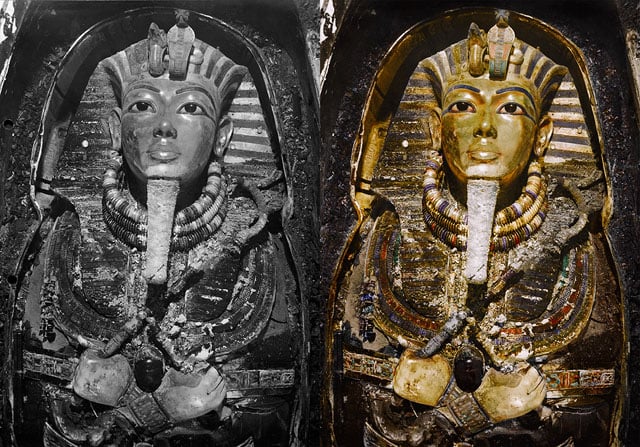
Photos of the 1922 discovery get a serious makeover.

Sarah Cascone

When King Tutankhamen’s tomb was discovered in 1922, there was no such thing as color photography, but thanks to the magic of technology, the original images of Howard Carter’s historic archaeological find can now be seen in dazzlingly, true-to-life-like color.
The original photos documenting Carter’s discovery, which took place 93 years ago this month after 15 years of searching, were digitally colored by Jordan Lloyd, founder of Dynamichrome, a company that offers high-fidelity colorization of black-and-white photos.
Harry Burton, the excavation photographer, was sent to the site by New York’s Metropolitan Museum of Art, and took some 2,800 glass negatives. Over the course of several months, with the help of careful research to accurately match the original colors, Lloyd has reconstructed a selection of Burton’s original photos of the discovery below, in full color.
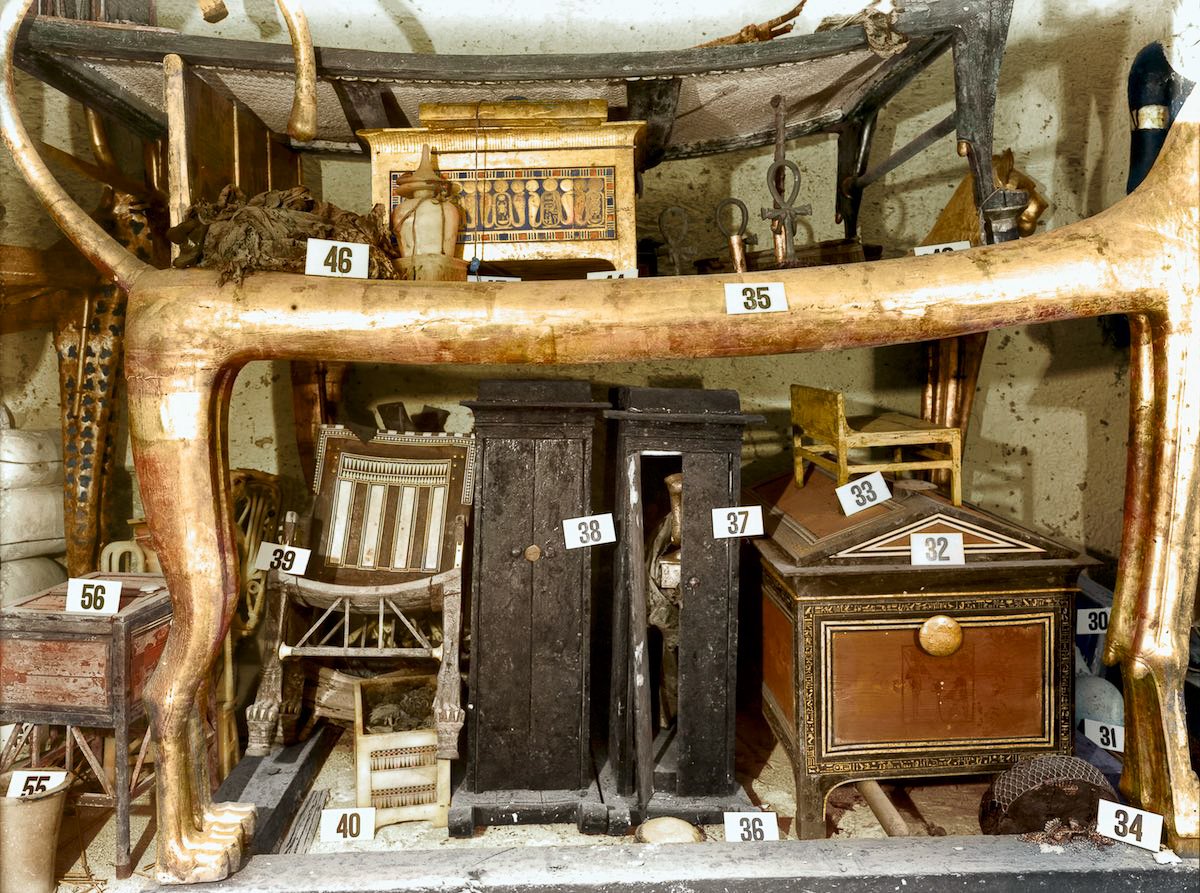
Harry Burton, artifacts from the antechamber to King Tut’s tomb.
Photo: Courtesy the Griffith Institute, colorization by Dynamichrome.
The resulting images are stunning—unlike surprisingly-ugly scientific reconstructions of what Tut himself would have looked like. Lloyd’s handiwork will be included in an exhibition on the tomb’s discovery opening this month at New York’s Premier Exhibitions.
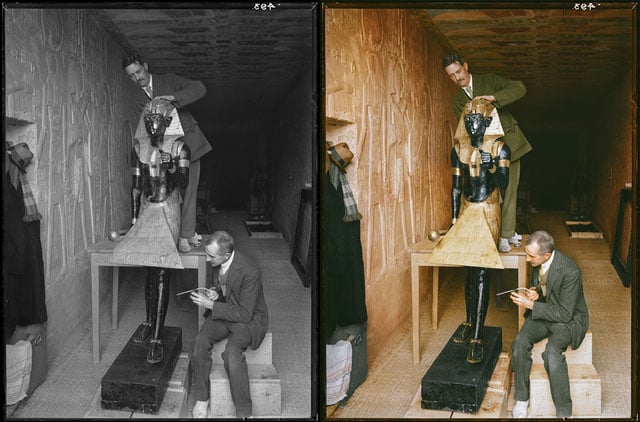
Harry Burton, conservators Arthur Mace and Alfred Lucas clean a statue from King Tut’s tomb in a makeshift laboratory in the tomb of Sethos II.
Photo: Courtesy the Griffith Institute, colorization by Dynamichrome.
“At first I could see nothing, the hot air escaping from the chamber causing the candle flame to flicker,” Carter wrote of his first glimpse of the tomb. “But presently, as my eyes grew accustomed to the light, details of the room within emerged slowly from the mist, strange animals, statues, and gold—everywhere the glint of gold.”
King Tut’s tomb has been back in the news of late thanks to new theories that his final resting place may be merely an ante-chamber to the much larger tomb of Nefertiti. Egypt has allowed Egyptologist Nicholas Reeves to search for the lost room, and its discovery may be imminent. The AFP reported that the initial findings from infra-red thermography scans support the theory of a hidden chamber.
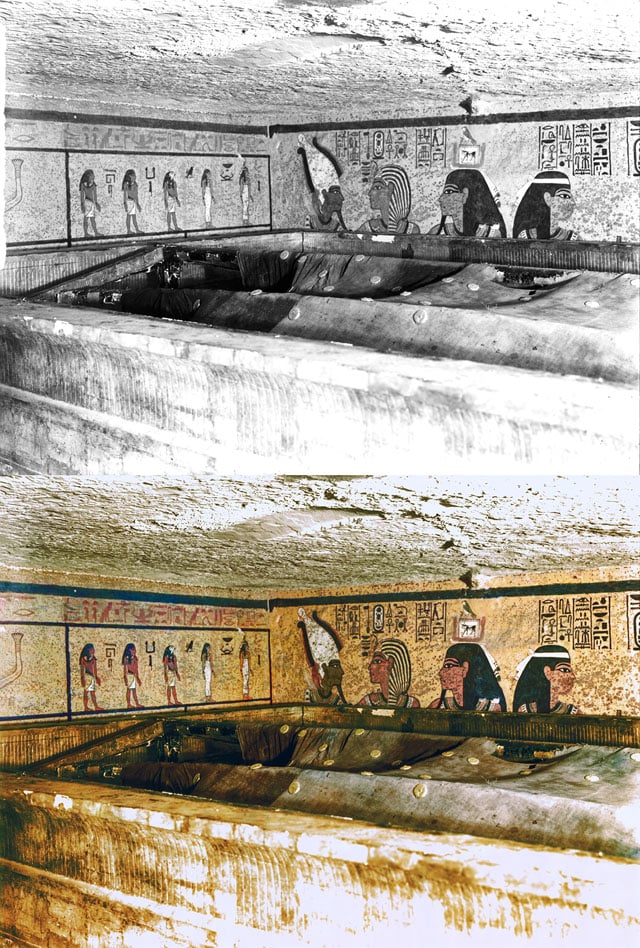
Harry Burton, murals on the walls of the outermost shrine in King Tut’s tomb.
Photo: Courtesy the Griffith Institute, colorization by Dynamichrome.
Researchers have also painstakingly recreated a copy of King Tut’s tomb using laser scanning and 3-D printing technology. See more images from the exhibition below.
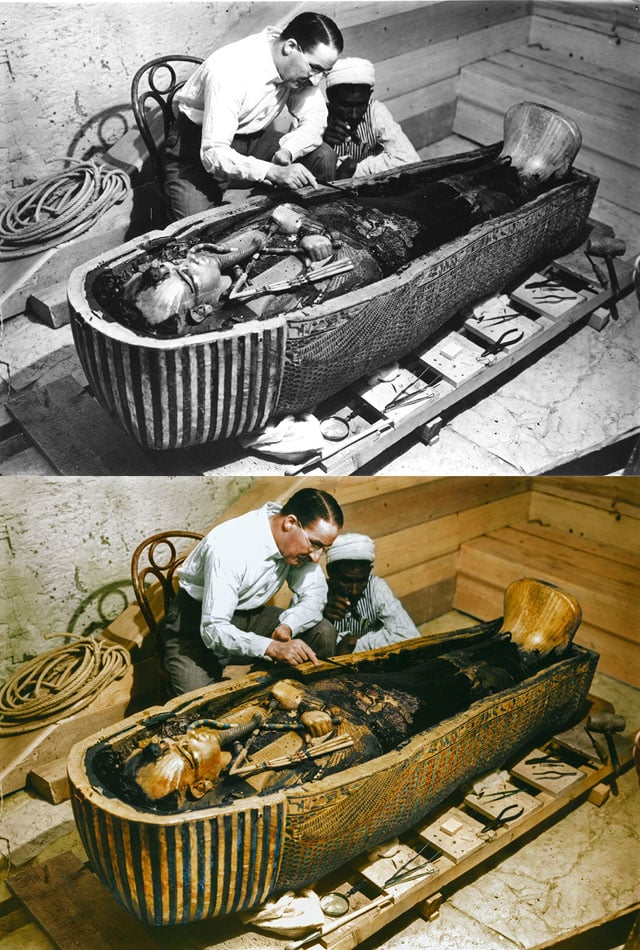
Harry Burton, Howard Carter examine King Tut’s sarcophagus.
Photo: Courtesy the Griffith Institute, colorization by Dynamichrome.
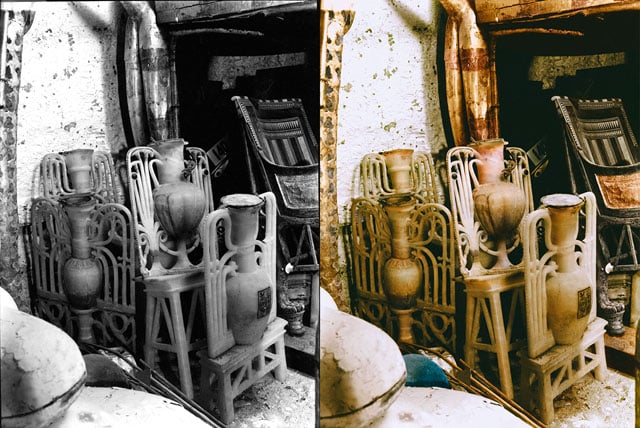
Harry Burton, alabaster vases in the antechamber to King Tut’s tomb.
Photo: Courtesy the Griffith Institute, colorization by Dynamichrome.
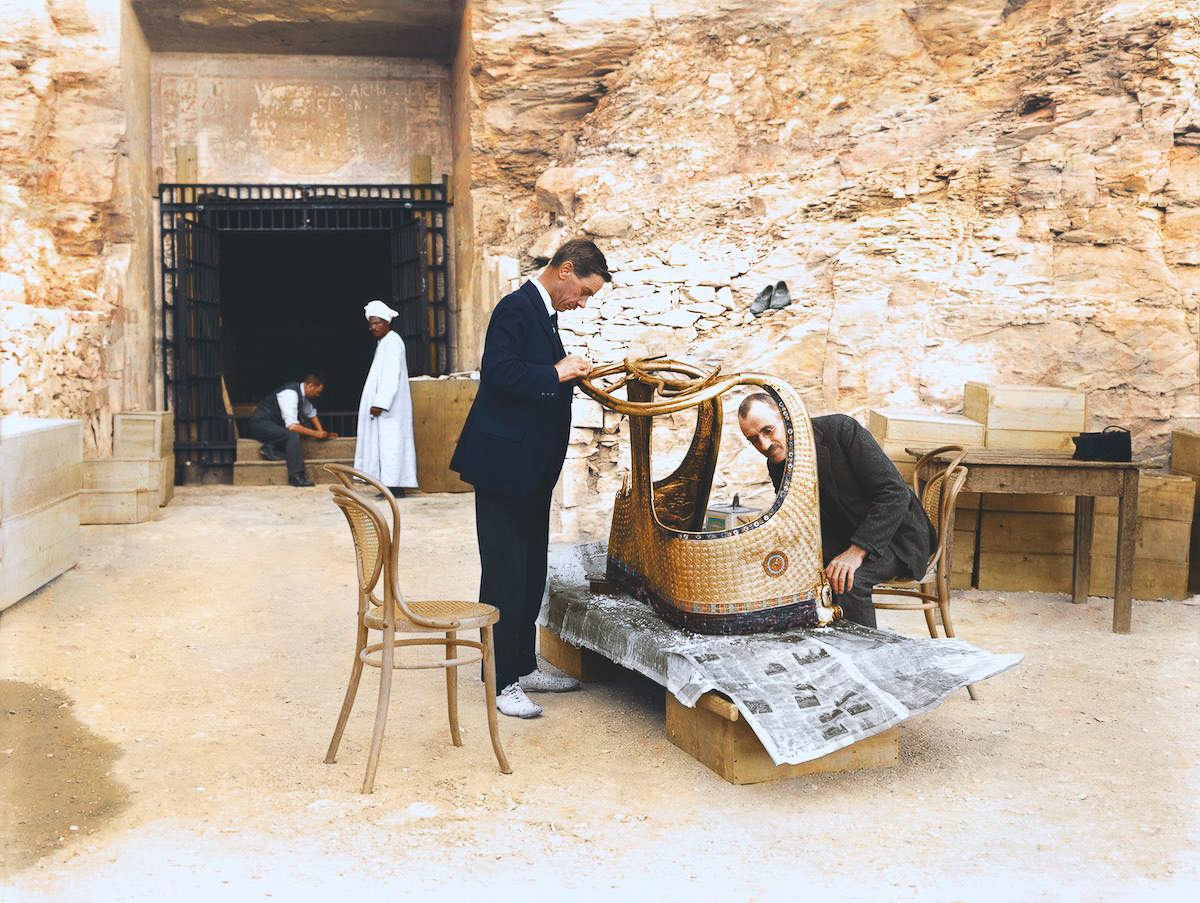
Harry Burton, conservators Arthur Mace and Alfred Lucas work on a golden chariot from King Tut’s tomb outside a makeshift laboratory in the tomb of Sethos II.
Photo: Courtesy the Griffith Institute, colorization by Dynamichrome.
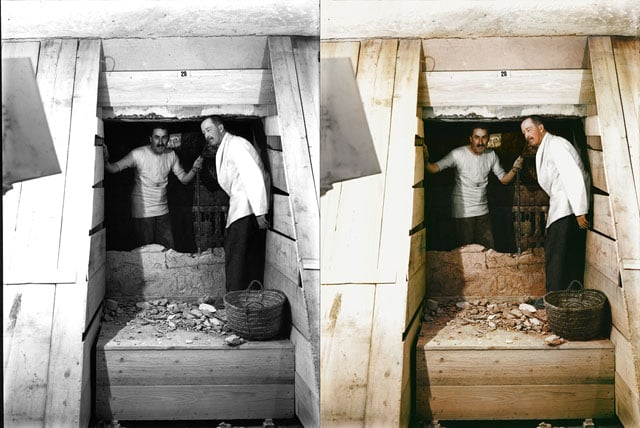
Harry Burton, Howard Carter and Lord Carnarvon, who financed the excavation, pose at the entrance to King Tut’s tomb.
Photo: Courtesy the Griffith Institute, colorization by Dynamichrome.
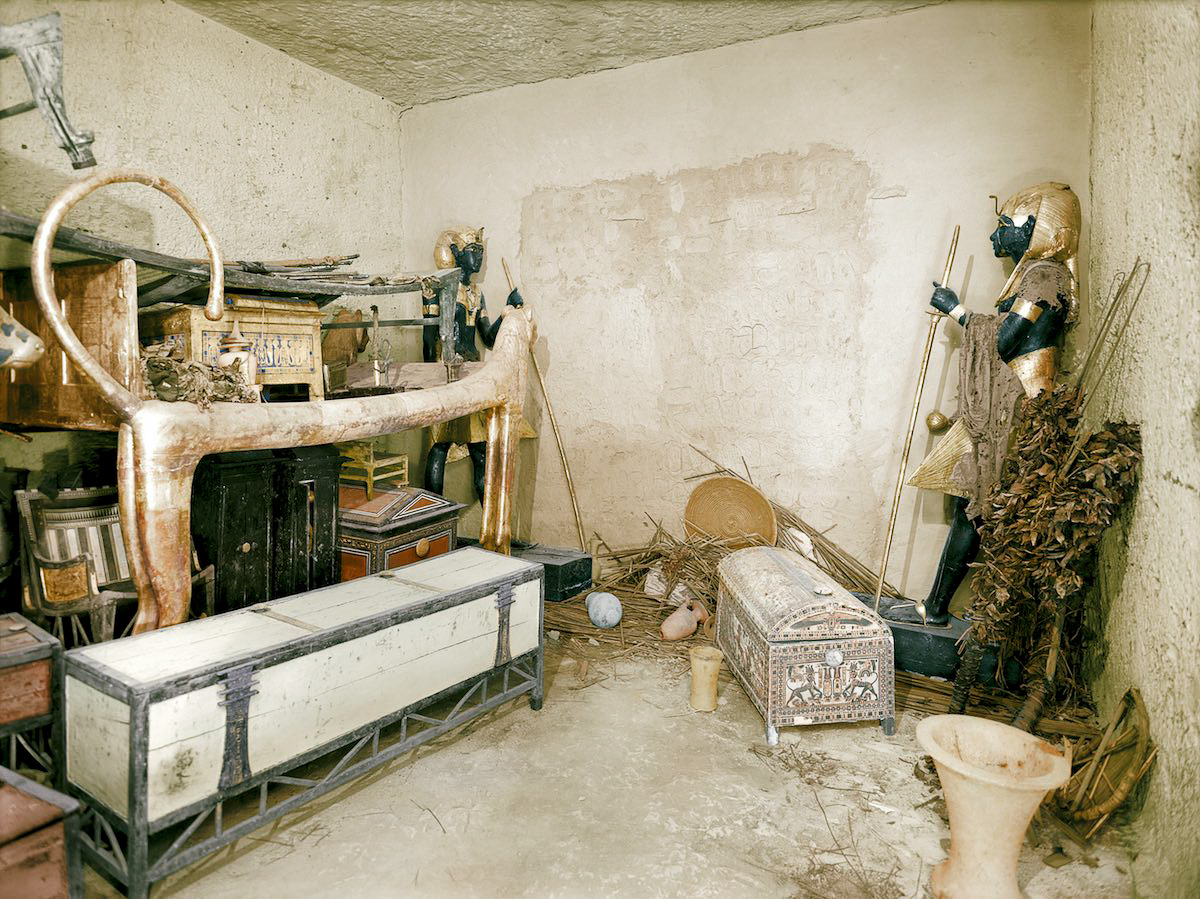
Harry Burton, artifacts from the antechamber to King Tut’s tomb.
Photo: Courtesy the Griffith Institute, colorization by Dynamichrome.
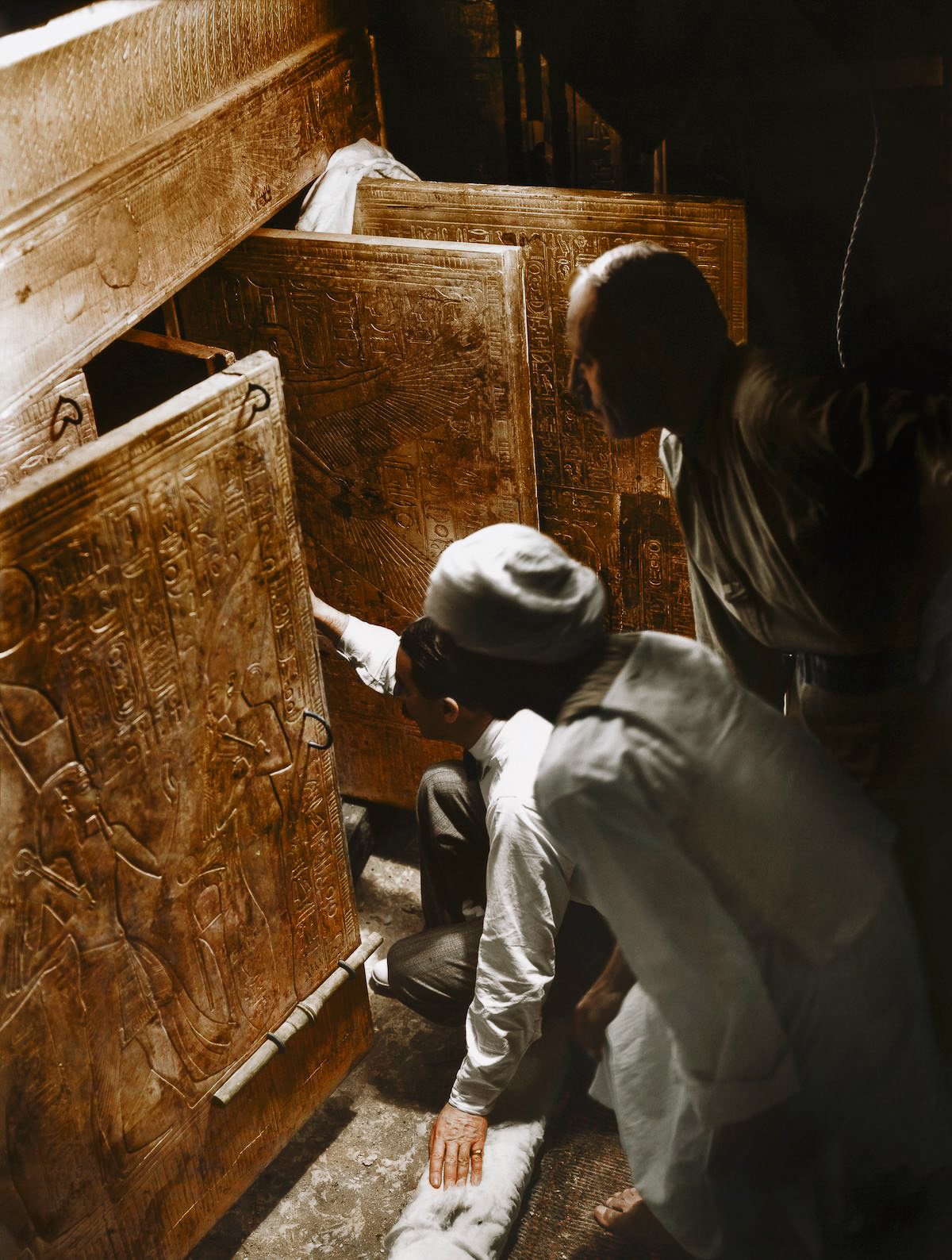
Harry Burton, Howard Carter, Arthur Callender and an Egyptian worker entering the innermost shrine to see King Tut’s sarcophagus for the first time.
Photo: Courtesy the Griffith Institute, colorization by Dynamichrome.
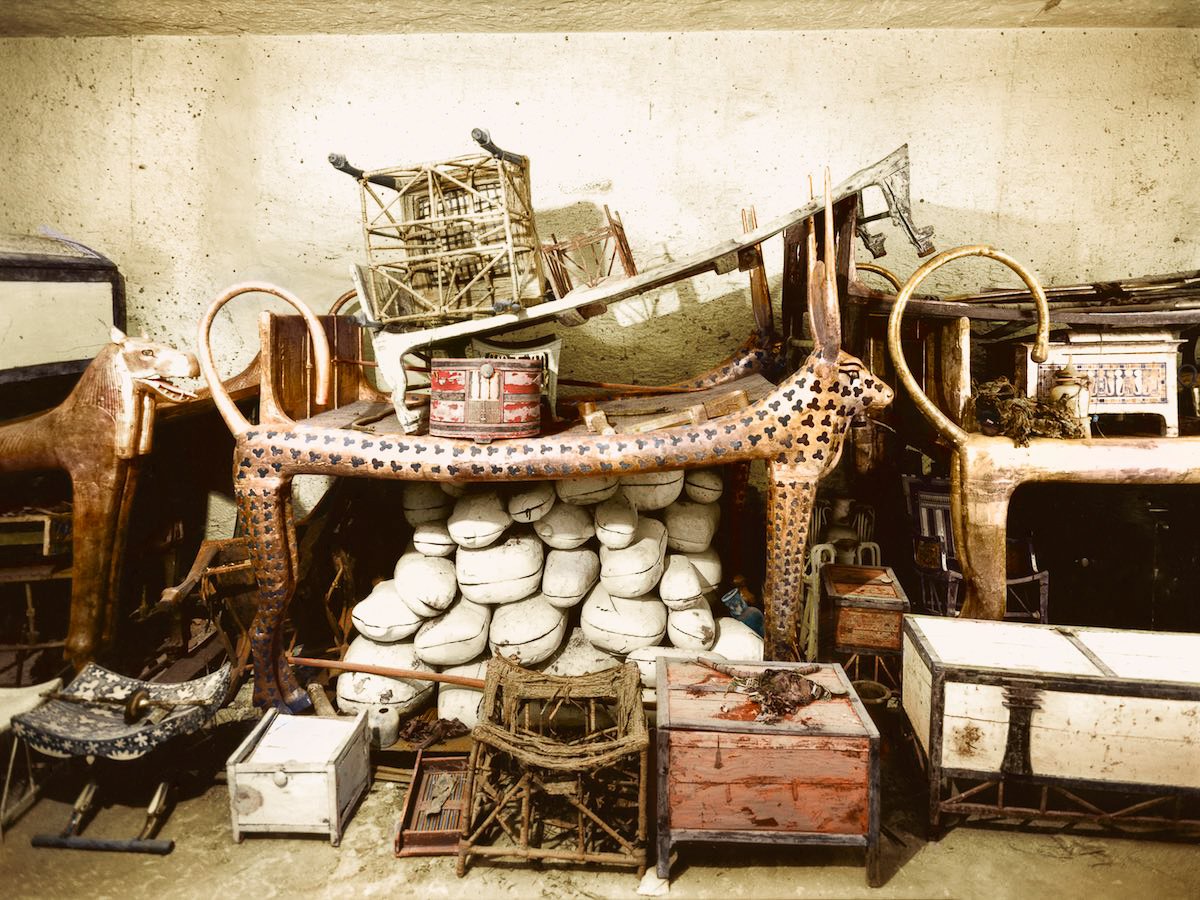
Harry Burton, artifacts from the antechamber to King Tut’s tomb.
Photo: Courtesy the Griffith Institute, colorization by Dynamichrome.
“The Discovery of King Tut” is on view at Premier Exhibitions at 417 5th Avenue beginning November 21, 2015.